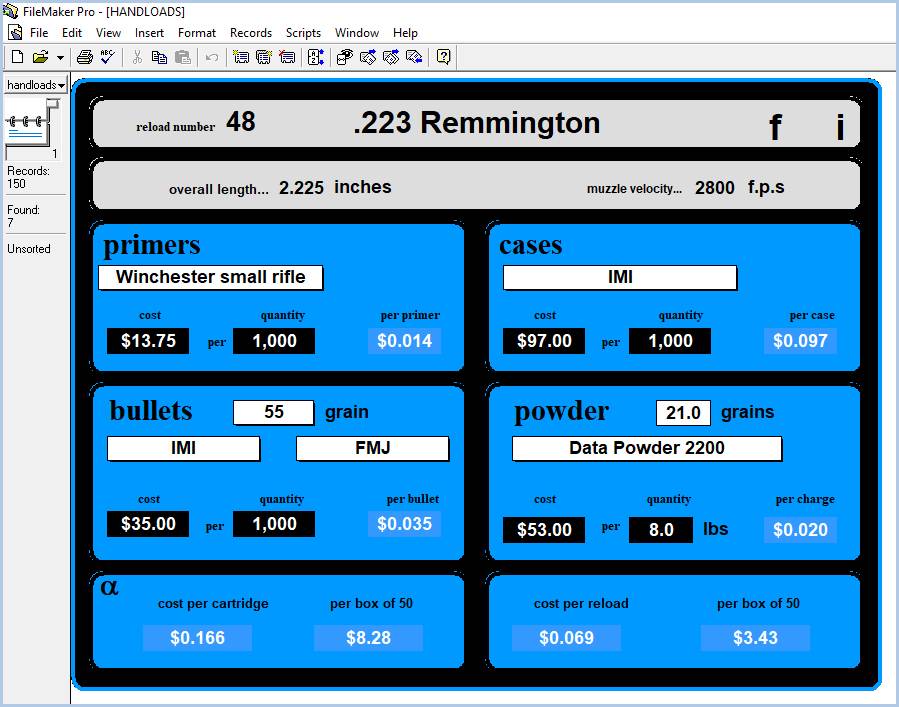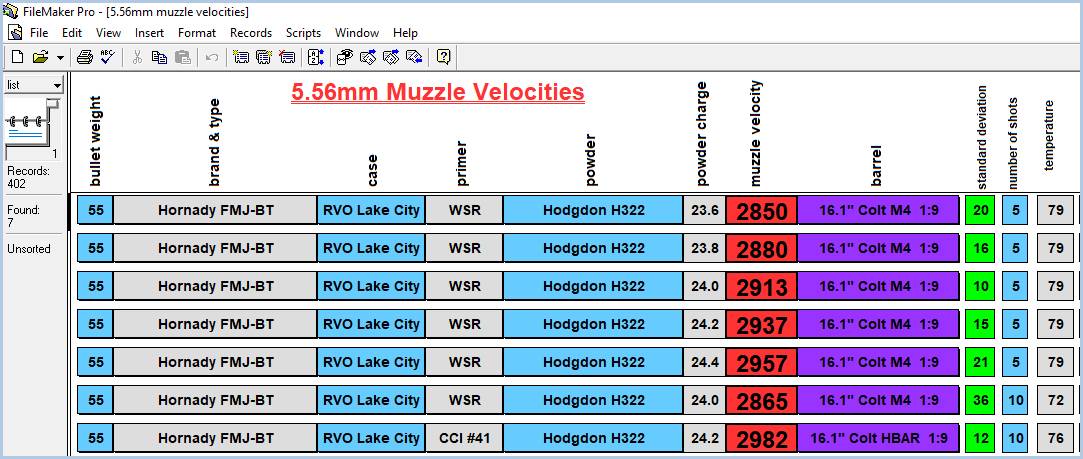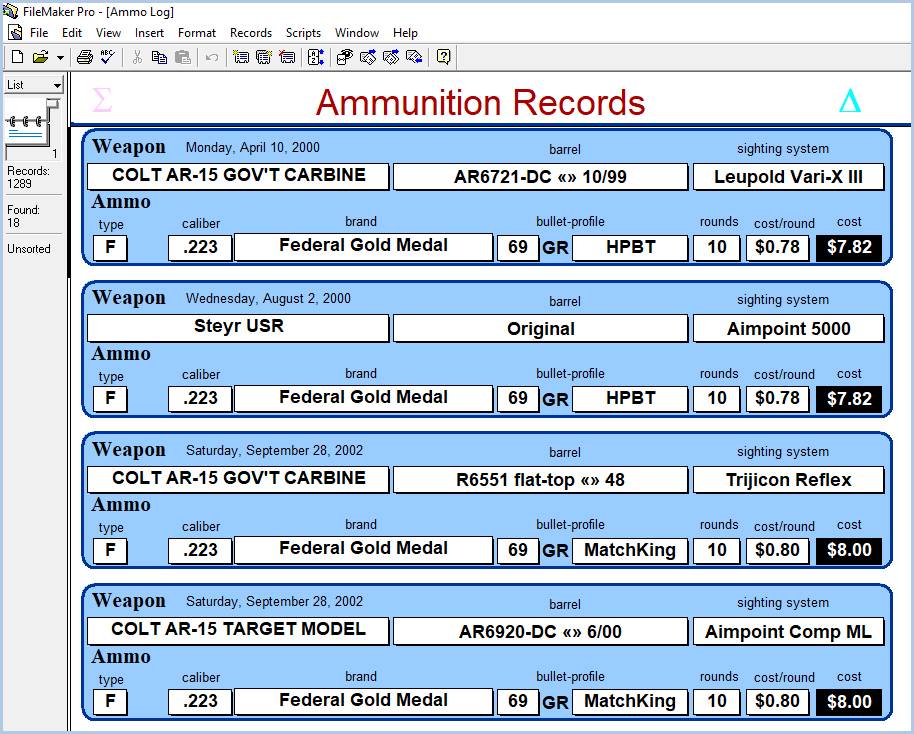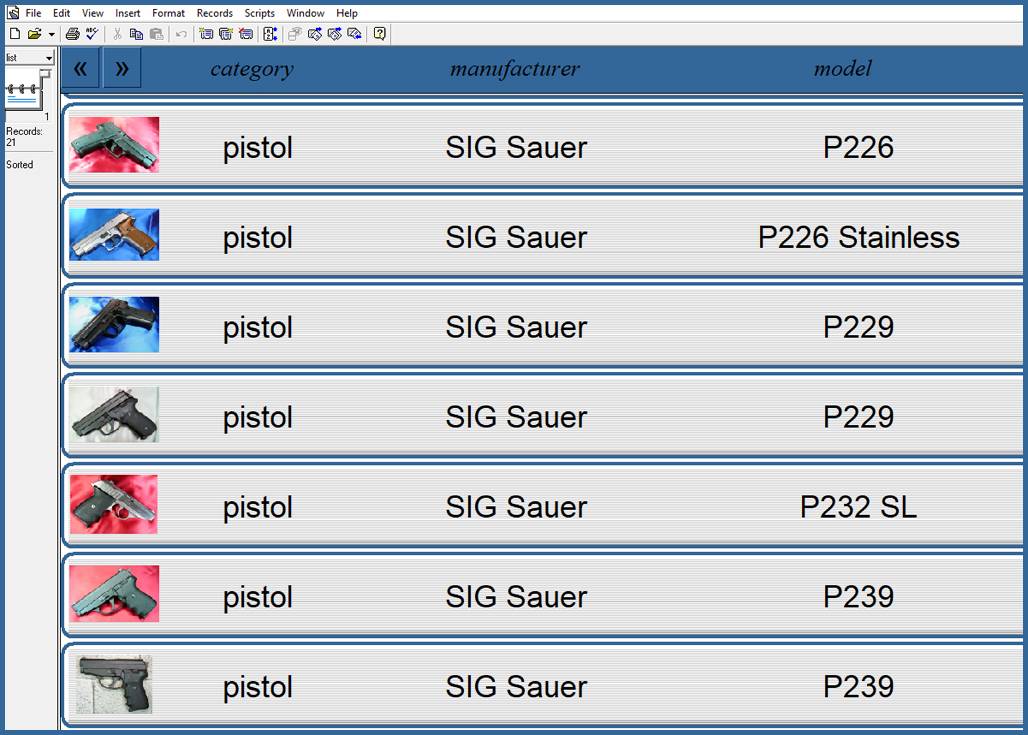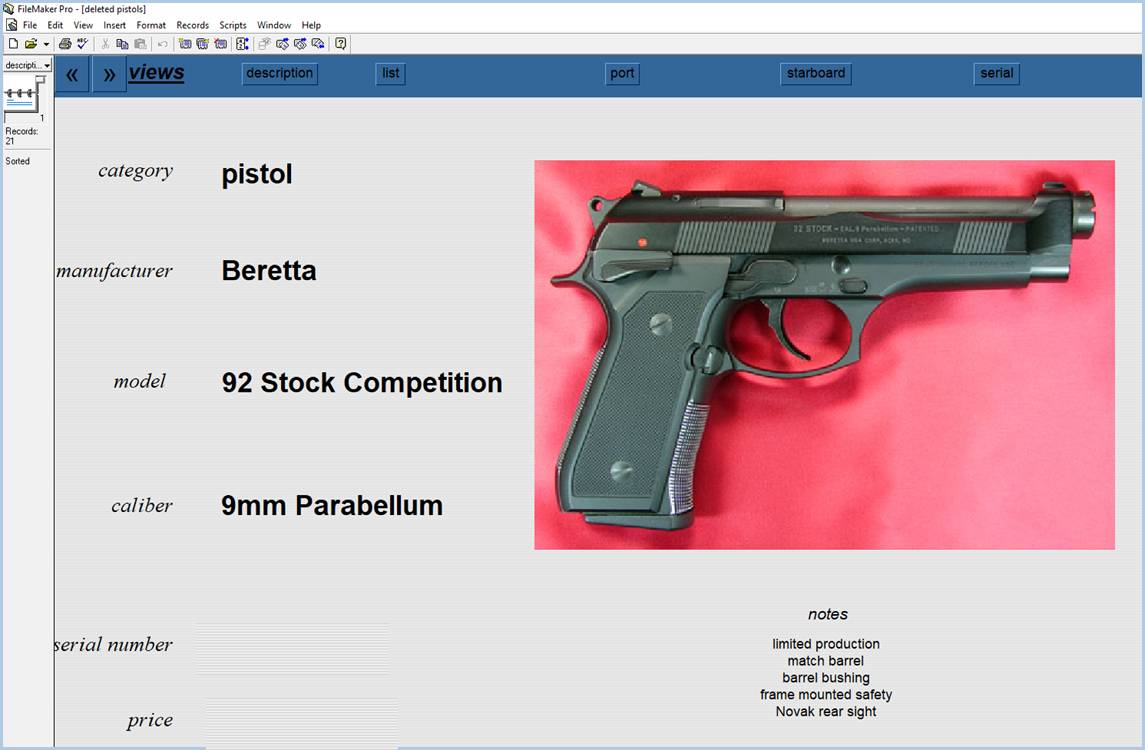Rather than have scraps of paper on my desk, in my range bag, on my reloading bench, in my car, etc., I was pondering having reloading data in a spreadsheet.
Columns I'm thinking would be:
Cartridge
Rifle
Date
Bullet
Powder Type
Powder Charge
Primer
Case
# of shots in group
Group size
Max Velocity
Min Velocity
Average Velocity
SD
ES
Atmospheric Conditions
Notes/Comments
Anything else?
Columns I'm thinking would be:
Cartridge
Rifle
Date
Bullet
Powder Type
Powder Charge
Primer
Case
# of shots in group
Group size
Max Velocity
Min Velocity
Average Velocity
SD
ES
Atmospheric Conditions
Notes/Comments
Anything else?



